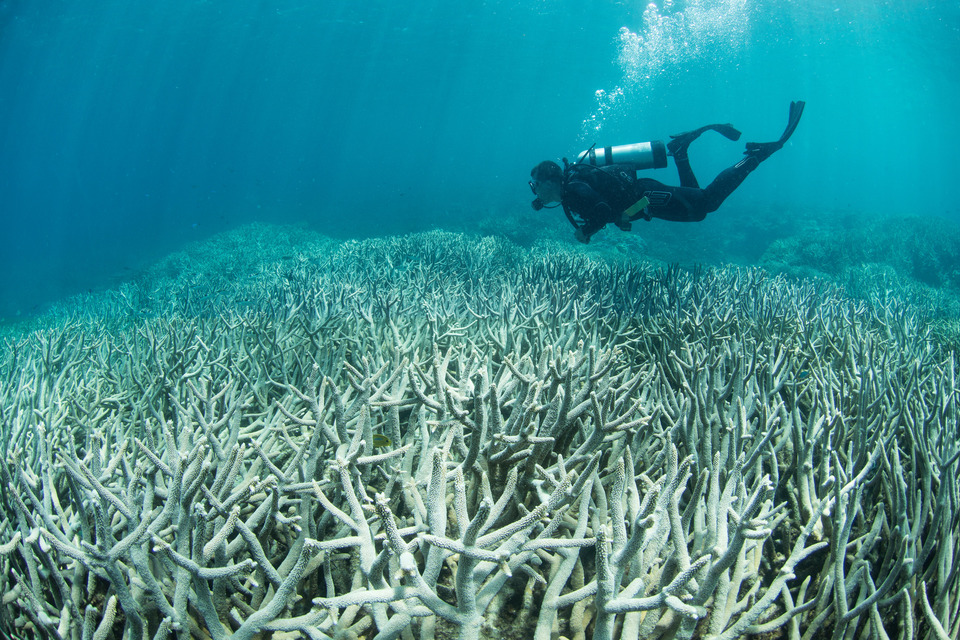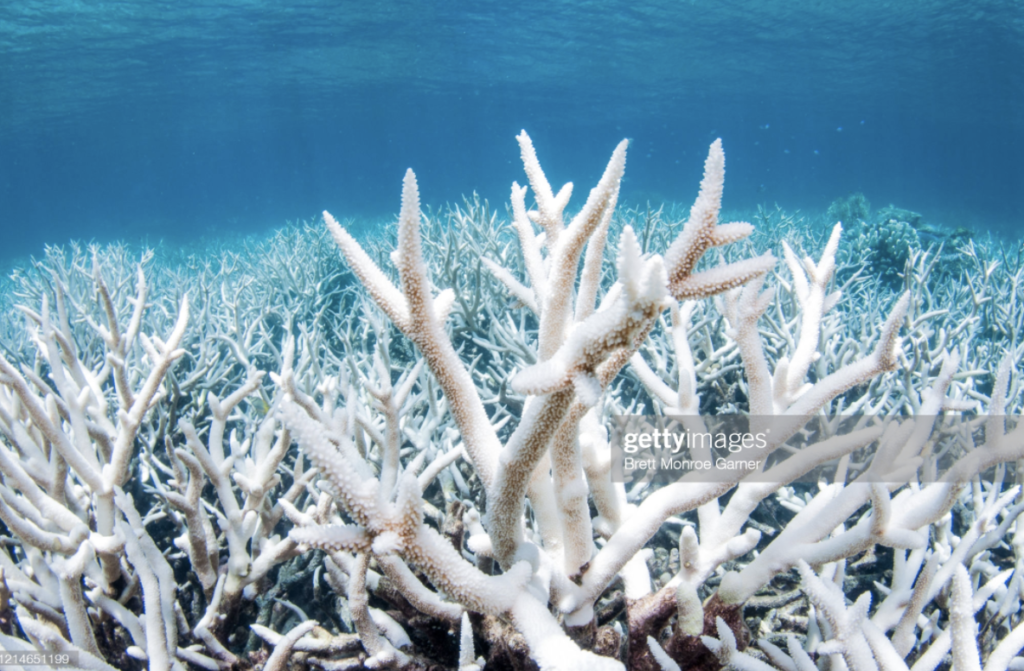
View Project Website
Originality, Accessibility and Significance
I am fascinated by the links between history and communication. How we have perceived events through time has a far reaching and serious impact on an historical event. This was an historiographical concept I wanted to explore in my project. I combined my interest in environmental history and communications to create a project that studied a major environmental focus of the Australian Marine Conservation Society (ACMS) – The Great Barrier Reef – from a new angle.
My online essay, inspired by interactive essays made popular by The New York Times like “Snowfall: The Avalanche at Tunnel Creek” and “Thirty Six Thousand Feet Under the Sea” analyses Australian public perceptions of incidents of coral bleaching in the last ten years.
I asked the following questions:
- When did we understood the seriousness of these environmental events?
- How did we interact with or approach them?
- How did large scale media organisations – the press and social media – contribute to our understandings and beliefs?
- How did industry and government change our perceptions and what role did politics play in dividing Australians on the issue?
My approach to this concept is theoretically original because it looks at a scientific concept through the perceptions of everyday people, making the essay both easily accessible to the average reader and complex enough for the science or history specialist to explore. The project is significant to the scientific community because it broadens their reach and makes a sometimes-inaccessible concept interactive. The ACMS will use elements of my website to further engage their current audience, but I also hope a more interactive study – like mine – will bring new audience members into their database.
Argument
In my online project, I argue that the media had the largest impact on how we as Australians observed an increase in mass coral bleaching. I argue that the media contributed to the development of a politicisation of the events and created a damaging counterargument arguing that climate change and coral bleaching were not linked. Periodically, I argue that Australians started to recognise the impact of climate change on the reef after successive mass coral bleaching in the summer of 2016-2017. I consider the context of successive bleaching when analysing public perceptions and concur that the motivation to protect the reef was affected in the last five to eight years by competing interests and political messages.
Evidence
My project is based on research conducted by experts in competing fields. I consider the intersection of varying disciplines – scientific, historical and communications – to be the best way to develop a holistic understanding. Resources include the (AMCS’s) extensive collection of newsletters, blogs and social media posts on the issue. I gained a lot of public insight from the ARC Centre of Excellence for Coral Reef Studies, the World Wildlife Fund and Climate Council who all hold annual public surveys on perceptions of the environment. There were many key secondary sources that assisted my research including Iain McCalman’s history of the Great Barrier Reef.
By using the “Way Back Machine” an online resource analyses web interactions, I conducted primary research I was able to pinpoint the key times when media focussed on coral bleaching and ask how this concept was being framed. Social media data analysis tools including Meltwater and SemRush also assisted my research. Through these programs I produced a keyword analysis on relevant phrases – “coral dying, coral bleaching” etc and considered how the media contributed to understandings of reefs.
Themes and Presentation
My project shows how visual representations of coral reefs have impacted our understandings. It is a key theme that I hope to have made clear in the layout of my project. I have included images of coral bleaching, including those from The Ocean Agency[3], and two videos – one sourced from the NFSA titled “Will the Great Barrier Reef Cure Claude Clough?” The drama, filmed in 1967, reflects how old our connection to the Great Barrier Reef has been yet how detached we remain from our impacts on its health. The second video, sourced from the Australian Institute of Marine Science, highlights one of the Great Barrier Reefs most bizarre and beautiful moments: coral spawning. Ironically, this process, a sign of coral health, has been used by conservative media to diminish coral scientists’ warnings. I hope these clips also reflect my second major theme: that coral aesthetics have been one of the most important aspects of public perceptions of bleaching since the 1990s.
My final major theme is the relationship between industry, scientist, communicator and the public. I analyse how these competing groups, with their own opinions and agendas have reconstructed the zeitgeist around coral bleaching. Such a framework is the only way to understand who cares about coral bleaching and why so many still refuse to connect it to climate change.
Need
This project will certainly broaden the number of people who interact with this issue. There have been almost 40 surveys completed on public perceptions of environmental change and degradation in the last five years and many are hidden in digital archives. My combined analysis of all these scientific and social research projects will bring a younger audience of university and high school students – not only interested in science but also in history and communication technology – to this issue. The ACMS existing database of the “Fight for the Reef” campaign has 75,900 subscribers and followers. By using this database as a launch-point, and incorporating visuals into existing research. I think this project will be hugely beneficial to the general public already interested in coral bleaching patterns.
Creativity and Sustainability
Though I was unable to develop oral histories around this project, I think the visual nature of this concept I’m exploring makes an interactive essay website the best possible platform for it. I would like to continue to build this project with the Marine Conservation Society and produce an accompanying Oral History series that would complement my existing research. I also thought a soundscape would make the project even more interactive. The AMCS are happy for me to continue to develop this project moving forward.


